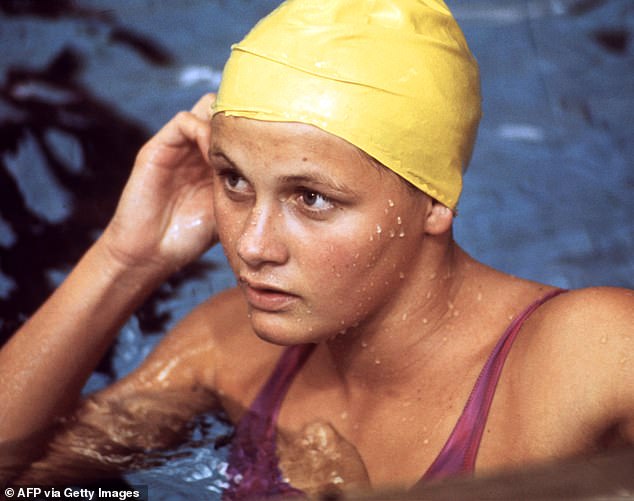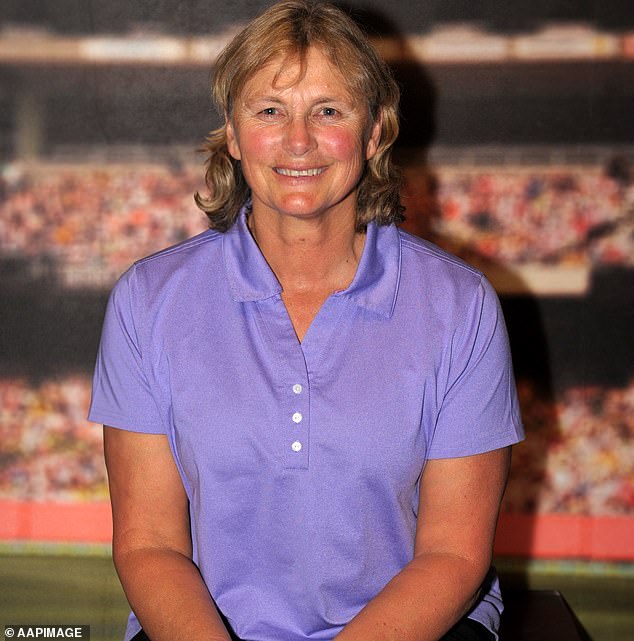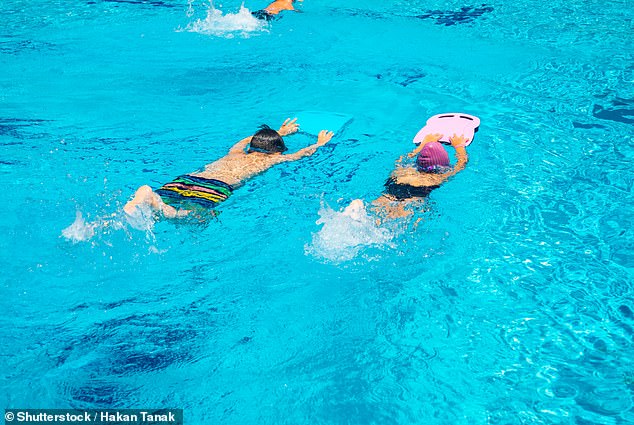Aussie Olympic legend Shane Gould says the way we’re teaching kids to swim is actually TRAUMATISING them – here’s how she wants to change that
- Shane Gould wants Australian children to learn to swim differently
- Believes that countless children are underwater for too long
- It is often a ‘traumatizing’ experience, and many people are afraid of swimming
Australian sports hero Shane Gould believes that putting babies and children underwater during swimming lessons so they can learn to hold their breath actually harms them.
Gould, who won three gold medals in the swimming pool at the 1972 Olympics in Germany at the age of 15, branded the common practice “traumatising.”
Speaking at the recent World Conference on Drowning Prevention in Perth, the 67-year-old revealed that many people have passed on the same thought to her over the years, saying their early personal experiences with swimming left them in the grip of fear.
It followed many who held their breath below the surface for too long, causing a dangerous buildup of carbon dioxide.
As a result, Gould and her husband, Ian Thorpe’s former swimming coach Milt Nelms, developed a simple ‘five-minute swimming lesson’ after a recent survey by the Royal Life Saving Society Australia found that many Australians cannot swim well.
Australian star athlete Shane Gould believes putting babies and children underwater during swimming lessons so they can learn to hold their breath ‘traumatises’

Gould, who won three gold medals at the 1972 Olympics at the age of 15, has come up with an alternative to the common practice

Gould said many people have relayed the same thought to her over the years: Their early personal experiences with swimming left them gripped by fear.

In Australia, where swimming is a necessary life skill given the abundance of beaches and pools in suburban homes, many instructors take a cautious and gentle approach (stock image)
The study found that 83 percent of 12-year-old children do not tread water for more than two minutes.
In addition, 40 percent were unable to swim 50 meters freestyle or backstroke.
Putting children underwater before they can swim makes them weak because carbon dioxide builds up and activates a “doom loop in your brain stem” that causes panic, Nelms told the Sydney Morning Herald.
Gould and her husband say the five-minute lesson they created offers the essentials of swimming, as well as insight into the human body’s buoyancy in water.
Inspired by famed American swimming coach Bill Boomer, the life lesson is an accurate gauge when it comes to ‘knowing and applying the essentials of drowning prevention in a single, short teaching experience’.
Gould and Nelms’ method involves teaching people how to move through the water without learning conventional strokes.
It is intended to teach students to stay calm if they get into trouble in the water. It includes an exercise where potential swimmers squat in the water, up to their necks, and then lift their feet so they can feel the roll. the air in their lungs keeps them afloat.
“There is a moment when you feel that your buoyancy is failing you,” Nelms explains.
‘The exercises are all like that. These feelings make sense once you feel them, and children will do things on their own to seek these feelings.”
